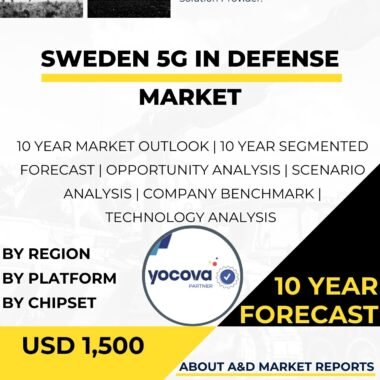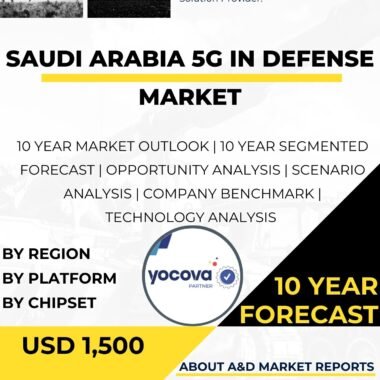Description
United Kingdom 5G in Defense Market
The United Kingdom defense 5G in Defense sector plays a crucial role in safeguarding national security and maintaining a robust military capability. As technology continues to evolve at a rapid pace, the integration of 5G technology has emerged as a transformative force with vast potential to revolutionize various aspects of defense operations. This article explores the implications of 5G in the UK defense market, highlighting its potential benefits and challenges.
5G technology offers significantly higher data transfer speeds, reduced latency, increased capacity, and improved network reliability compared to its predecessors. These capabilities have the potential to enhance defense communications, enable real-time data analysis, and facilitate the seamless integration of various defense systems.
One of the most critical applications of 5G in defense is the establishment of the Internet of Things (IoT) and the ability to connect an unprecedented number of devices and sensors. This interconnectedness allows for more comprehensive data collection, analysis, and automation, enabling smarter decision-making and resource allocation. For the UK military, this means improved situational awareness, enhanced intelligence gathering, and more effective command and control capabilities.
Furthermore, 5G technology is expected to underpin the development of autonomous systems, such as unmanned aerial vehicles (UAVs) and autonomous ground vehicles. These systems can perform various tasks without direct human intervention, reducing risks to personnel and expanding the scope of military operations.
The UK defense sector also anticipates improved logistics and supply chain management through 5G-enabled solutions. With real-time tracking and data analytics, defense authorities can optimize logistics routes, reduce transportation costs, and enhance overall efficiency in resource allocation, ensuring the timely delivery of critical supplies to military personnel.
Moreover, 5G can elevate the training capabilities of armed forces. Virtual and augmented reality technologies, powered by 5G, can create highly realistic and immersive training environments. Soldiers can undergo simulated combat scenarios, improving their skills, decision-making abilities, and overall preparedness for real-world situations.
While the integration of 5G technology holds tremendous potential, it also presents challenges for the UK defense market. Security concerns are paramount, as the increased reliance on interconnected devices and networks exposes defense systems to cyber threats and potential breaches. Robust cybersecurity measures must be put in place to protect sensitive data and ensure the integrity of military operations.
The UK government, along with defense contractors, must also invest heavily in the necessary infrastructure to support 5G capabilities nationwide. This requires significant financial resources and collaboration between the private sector and government agencies.
Furthermore, as the defense sector adopts 5G technology, there may be a need for upskilling and training the workforce to effectively operate and maintain the new systems. A well-trained workforce is essential to fully leverage the benefits of 5G technology in defense operations.
Geopolitical considerations also come into play. The UK’s collaboration with international partners in defense projects may be influenced by different approaches to 5G technology adoption and the potential impact on national security interests.
In conclusion, the integration of United Kingdom 5G in Defense Market offers significant opportunities to enhance operational capabilities, improve situational awareness, and streamline logistics and training. However, addressing cybersecurity concerns, investing in infrastructure, and developing a skilled workforce are crucial for successful adoption. The successful implementation of 5G in defense will undoubtedly shape the future of the UK’s military and its ability to respond effectively to evolving threats and challenges.




